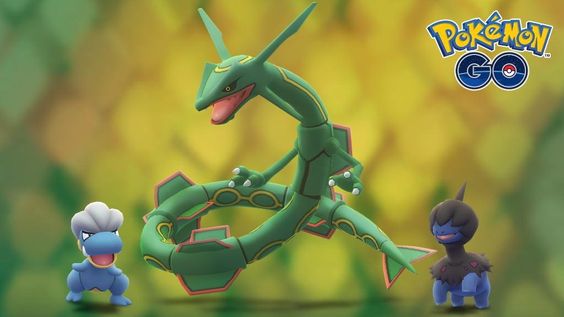Pokémon is a complex and dynamic game, known for its intricate type matchups and strategic battles. One of the fundamental aspects of Pokémon battles is type advantages and weaknesses. In this article, we will delve into the intriguing world of Pokémon Ground weakness and explore how this type can be a valuable asset when used correctly.
The Basics of Ground-Type Pokémon
Ground-type Pokémon are known for their earthy and rugged attributes. They are often associated with rock and soil, and they possess a wide range of moves, such as Earthquake and Mud-Slap, that make them formidable opponents in battles.
Ground-Type Strengths
Before we discuss Ground-type weaknesses, it’s important to acknowledge their strengths:
Immunity to Electric: Ground-type Pokémon are immune to Electric-type moves. This unique trait makes them effective counters against Electric-type Pokémon, neutralizing their attacks.
Super Effective Against Several Types: Ground-type moves are super effective against five other types: Fire, Electric, Poison, Rock, and Steel. This versatility allows Ground-type Pokémon to inflict heavy damage on a variety of opponents.
Ground-Type Weaknesses
Despite their strengths, Ground-type Pokémon also have some notable weaknesses:
Water-Type Vulnerability: Ground is exceptionally weak to Water-type moves. This makes Water-type Pokémon the most effective counters against Ground-types. Their moves, like Surf and Hydro Pump, can deal massive damage to Ground-type opponents.
Ice-Type Weakness: Ground-types are also weak to Ice-type moves, another type of attack that can exploit their vulnerabilities. Ice Beam and Blizzard are examples of powerful Ice-type moves.
Grass-Type Concerns: Ground-type Pokémon are weak to Grass-type moves, making Grass Pokémon a suitable choice for countering them. Moves like Solar Beam and Energy Ball can be particularly effective.
Flying-Type Advantages: Ground-type moves have no effect on Flying-type Pokémon. This means that Ground-type Pokémon are powerless against these airborne opponents, requiring strategic planning to deal with them.
Strategies for Ground-Type Weaknesses
To mitigate the Ground-type weaknesses, trainers can employ several strategies:
Dual-Type Pokémon: Many Pokémon have dual types, which can reduce their susceptibility to Ground-type attacks. For instance, a Water/Ground-type Pokémon would only take normal damage from Ground-type moves.
Move Diversity: Equipping your Pokémon with a variety of moves can help them combat their weaknesses effectively. Water Pokémon that can learn Ice-type moves, for example, can counter Ground-types.
Team Composition: Building a well-balanced team that covers each other’s weaknesses is crucial in Pokémon battles. Ensure you have Pokémon with moves that counter Ground-type weaknesses.
Conclusion
Understanding the intricacies of type advantages and weaknesses is vital for any Pokémon trainer seeking success in battles. While Ground-type Pokémon are powerful in their own right, they have distinct vulnerabilities that can be exploited with the right strategy. Whether you’re a seasoned trainer or just starting your journey, being aware of these nuances can make all the difference in your Pokémon battles. So, train hard, strategize wisely, and master the art of exploiting Ground-type weaknesses to become a true Pokémon master.








